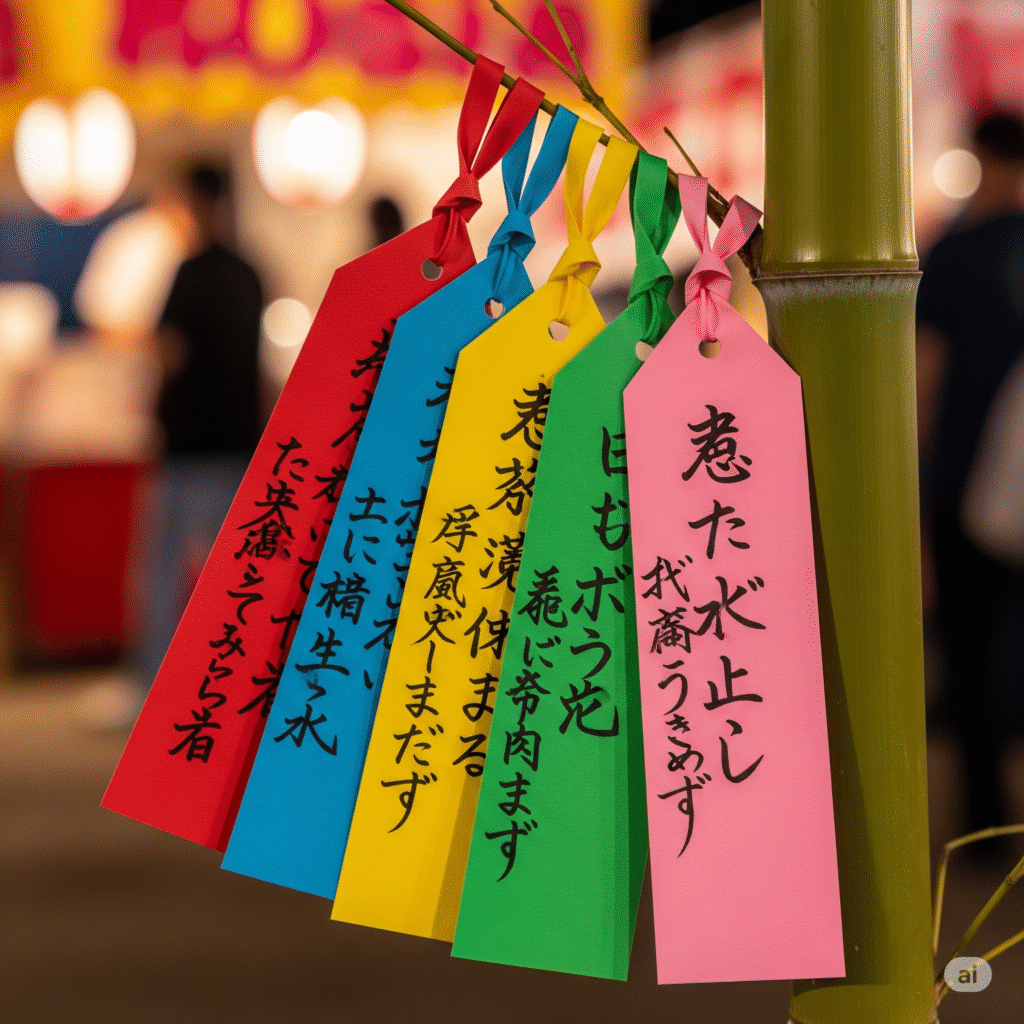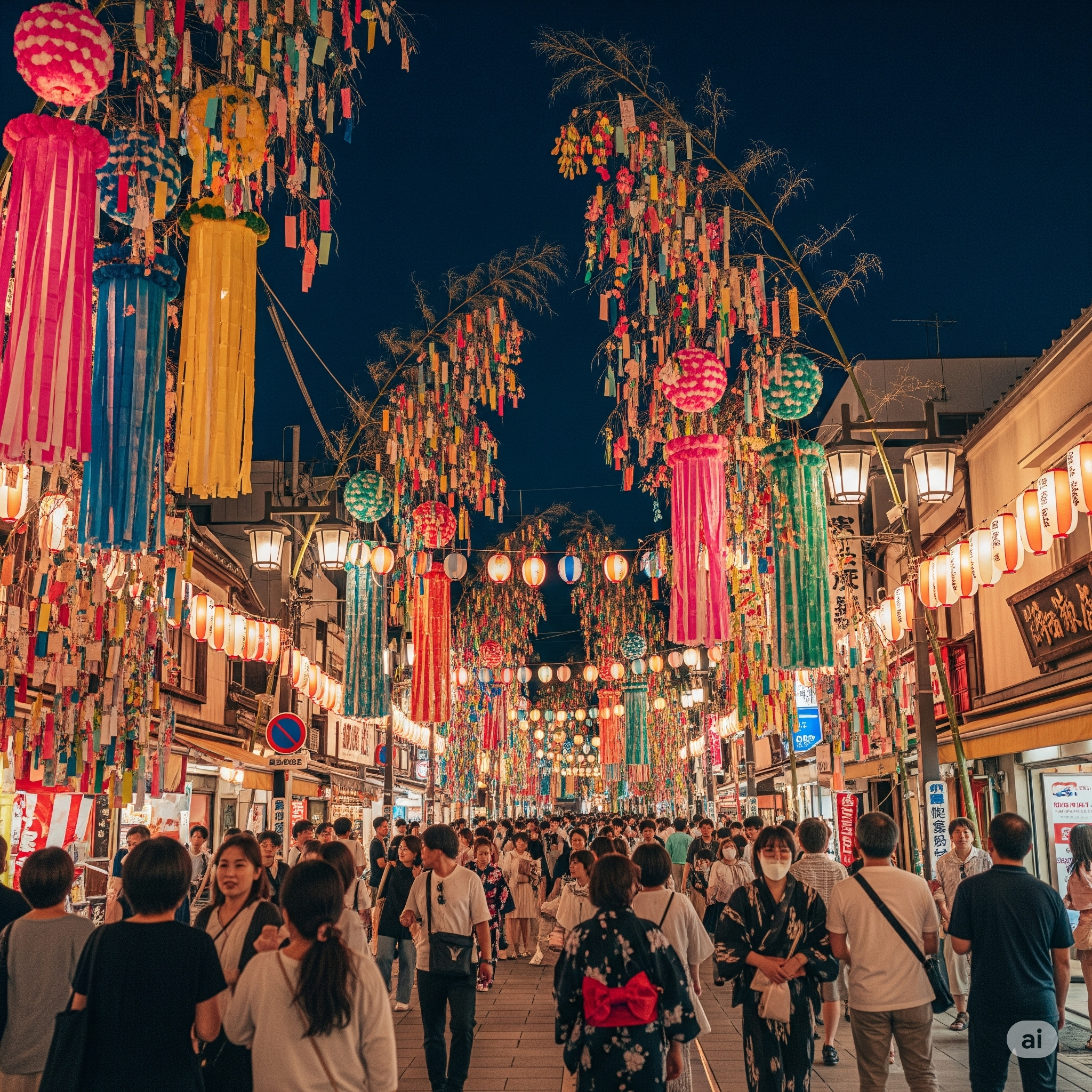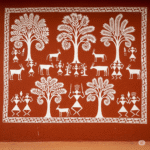Every summer in Japan, streets come alive with fluttering paper wishes, glowing lanterns, and colorful streamers – all in honor of a celestial love story. This is Tanabata, the Star Festival, a tradition that blends ancient Chinese legend with Japanese seasonal rituals. It’s more than just pretty decorations – it’s a poetic celebration of longing, love, and hope written in the stars.
The Legend Behind Tanabata
Tanabata (七夕), meaning “Evening of the Seventh,” is based on a romantic myth from Chinese folklore. It tells the story of Orihime (the weaving princess, represented by the star Vega) and Hikoboshi (the cowherd, represented by the star Altair).
According to legend, Orihime and Hikoboshi fell so deeply in love that they neglected their duties. As punishment, they were separated by the Milky Way, allowed to meet only once a year – on the seventh day of the seventh lunar month.
In Japan, this touching tale became the heart of Tanabata, a festival observed each July or August, depending on the region. If it rains on Tanabata night, it’s said the lovers must wait another year.
Tradition Meets Creativity

One of the most iconic Tanabata customs is writing wishes or poems on small strips of colored paper called tanzaku. These are then tied to bamboo branches, turning entire neighborhoods into gardens of handwritten dreams swaying in the wind.
Each color of tanzaku represents a different kind of wish – red for gratitude, blue for self-improvement, green for health, yellow for relationships, and so on.
Festival Highlights
- Bamboo Wish Trees: In homes, schools, and temples, bamboo stalks are decorated with tanzaku, origami cranes, and star-shaped streamers.
- Street Parades: Cities like Sendai and Hiratsuka host elaborate parades with floats, musicians, and fireworks.
- Food Stalls: Like most Japanese festivals, Tanabata also includes delicious snacks – from yakisoba and takoyaki to shaved ice and star-shaped sweets.
Some towns go all out with competitions for the most creative decorations, and the streets turn into open-air galleries glowing at night.
Sendai Tanabata: Japan’s Grandest
The Sendai Tanabata Matsuri in northeastern Japan is considered the most famous. Held every August, it features massive paper streamers suspended from bamboo poles, each up to 10 meters long. Skilled artisans spend weeks crafting them by hand, and the entire city bursts into color.
Traditional games, folk dances, and fireworks make it a perfect mix of ancient custom and modern celebration.
Symbolism and Sustainability

Tanabata is also a festival of seasonal awareness. Bamboo, chosen for its resilience and ability to grow quickly, symbolizes strength and flexibility. After the festival, many people burn or float their wish papers – symbolically sending them to the heavens while ensuring minimal waste.
Global Reach
Japanese communities around the world have brought Tanabata to cities like São Paulo, Los Angeles, and Paris. In some schools and cultural centers, children learn about the story of Orihime and Hikoboshi as part of Japanese language or folklore classes – often tying their first tanzaku to a shared tree.
A Celebration of Hope
In a world of instant messages and fast-paced connections, Tanabata slows us down to reflect, write, and dream. Whether your wish is for love, health, peace, or success, there’s something








